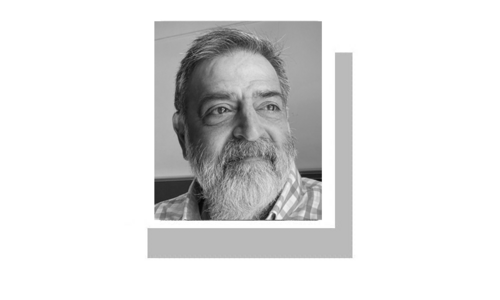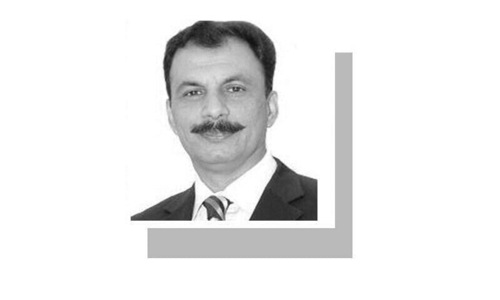REGARDLESS of what the urban crusaders against corruption would have us believe, it is the more reliable communal polarisation or some other parochial mobilisation, say caste, which is more likely to set the agenda for the next general elections in India.
This has been par for the course since the beginning of India’s free-market economic policies in 1991. Had the fabled economic agenda found traction with the electorate, Prime Minister Manmohan Singh would sit in the Lok Sabha and not the Upper House.
The trick is simple. Distract the middle classes with the lure of the free market and let loose an Advani here or a Modi there to set up the more compelling agenda. The current ethno-communal inferno in Assam may have started the race ahead of the whistle that is otherwise only due in 2014.
I have not visited Assam recently, but colleagues I trust have seen some of its strife-torn areas. They found hundreds of thousands caught in an unabated spiral of Muslim-tribal violence, most of whom are forced to live in camps in subhuman conditions.
To compound the chaos, Muslims in Assam are split into moderate Barelvis and the doctrinaire Wahabis. The internecine rivalry could get a wider play in the next polls.
Assam’s Bodo tribal people, like their hapless and unlikely rivals, the state’s Muslims, are used as cat’s paws in what has been essentially an upper caste-led communalisation since 1978. That year the Rashtriya Swayamsevak Sangh got a toehold in the power structures of Delhi.
That’s how the political class has dealt with ethno-communal stand-offs anyway. If a wedge is driven, say in Orissa, between a low-ranking Christian tribal community and a poorly off Hindu Dalit group, then a combination of dispossessed Dalits and tribespeople could be mobilised to target equally helpless Muslims elsewhere, for example in Gujarat.
Uttar Pradesh, to take another example, looks ripe for a pitched confrontation between the lowly but communalised Muslims and the lowlier community of communalised Dalits. The mullah and the pandit have been locked in a veritable futures trade in which political parties play the punters.
It would be an exaggeration though to suggest that the BJP’s Hindutva hordes start communal riots and that the Congress uses its secular demeanour to win over the minorities. The game is more nuanced.
As the incorrigible Muslim-baiter Narendra Modi undergoes an image makeover to gain acceptability for his reported ambition to become prime minister, the Congress is keenly eyeing the oncoming Hindu-Muslim confrontation as an opportunity to play both sides of the street.
Having done poorly in most states and reeling under serious corruption charges, it will need an Assam-like tinderbox to improve its chances for 2014.
In a sense, the cynical approach to politics is dictated by the exigencies of India’s bipartisan reforms regime. Free-market policies were initiated by the Congress to be owned by the BJP during the Vajpayee tenure. As part of the bargain, BJP leaders took turns to incite communal violence before passing the baton to the next in line.
It was Vajpayee’s incendiary speech in the 1983 Assam elections that led to the Nellie massacre of a few thousand homeless Muslims. Their killers were equally impoverished tribal people. Vajpayee then placed the responsibility into the capable hands of Lal Kishan Advani.
As if on cue, Manmohan Singh’s cause was boosted as Advani kept the country riveted to Ayodhya, away from parliament where Nehru’s India was dismantled and pawned away to corporate bidders bit by bit without anyone taking much notice.
It is not quite clear to me when or how precisely the current communal upsurge began in Congress-ruled Assam. Given the cocktail of stupor and bias in much of the national media, it may leave us with little choice but to find hints in rival narratives. One encapsulates the views of Assamese Muslims, though not without their share of communal vitriol. The other follows the events as the BJP sees them unfolding in Assam.
The Muslim construct traverses history. The Assam agitation in the early 1980s, according to this view, began in protest against the exploitative practices of outsiders, including Bengali bureaucrats, Marwari businessmen, sundry moneylenders, contractors and other carpetbaggers from different regions of India.
The RSS cleverly turned it into an anti-Muslim, specifically anti-Bengali Muslim affair. The witch-hunt that followed the communal hysteria did not hurt the so-called Bangladeshi Muslims as it did Assamese Muslims of Bengali origin.
According to the Assamese Muslim view, it was the Bengali Hindu clerks who came to Assam with the British from Calcutta and Dhaka in 1834. Then in 1836, Bengali was imposed as the official language in Assam. Muslims in Assam see the BJP as a party of traders and moneylenders mostly from Rajasthan and parts of Gujarat.
An inspired Hindu view of the conflict is aptly represented by the BJP. The party’s stance on Assam is not surprisingly nuanced and keeps the pretence of its image makeover. It prefers to relish highlighting the Congress’s double game instead of instigating sectarian violence as the BJP otherwise does with ease.
About the Nellie massacre, which the BJP fuelled and fanned in 1983, the party says glibly but not without a grain of truth: “The Congress did not raise an eyebrow. In July 1983, a commission was set up (and) submitted a 600-page report in January 1984 ... Till date it is kept a closely guarded secret. So much for the Congress’ concern for the minorities.”
The BJP twists the knife further in the Congress’s back. “Nellie survivors received Rs5,000 for each dead and three bundles of tin sheets for roofing their houses,” the party spokesperson recalled tartly. “The Sikh survivors of the 1984 anti-Sikh riots in New Delhi and nearby areas, received up to Rs700,000 each.” What a way to pit two of the most battered Indian communities against each other.
Indian elections do take a cue from the fatal duels that Roman slaves were forced to fight for the glory of rulers. The Indian version of the Coliseum — somewhat like a circus tent — keeps moving, from Assam to Uttar Pradesh, Gujarat to Delhi, negotiating the world’s largest democracy, putting on a dazzling display of grit and gore, of triumphant cynicism, of wounded hope.
The writer is Dawn’s correspondent in Delhi. jawednaqvi@gmail.com









































